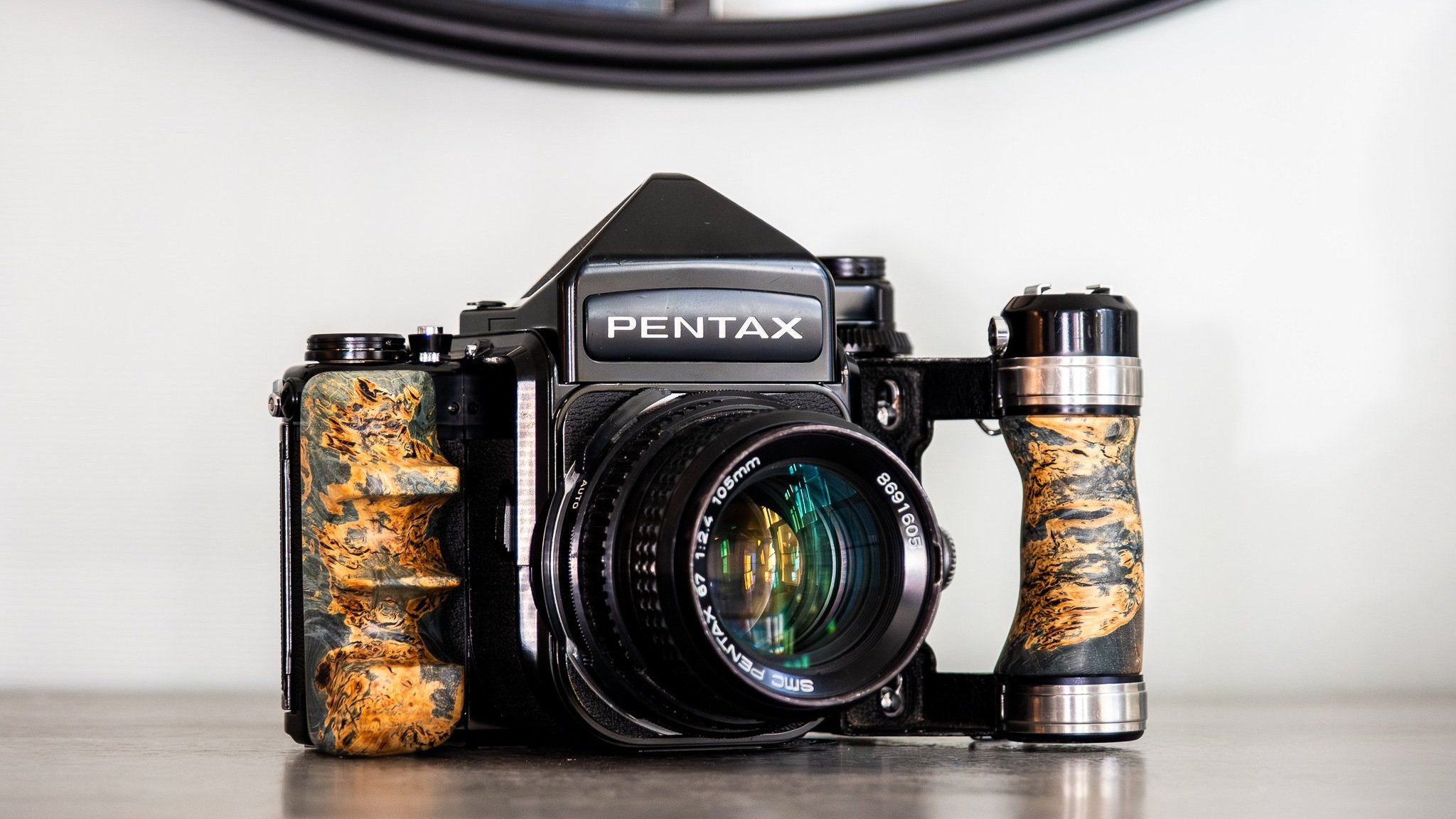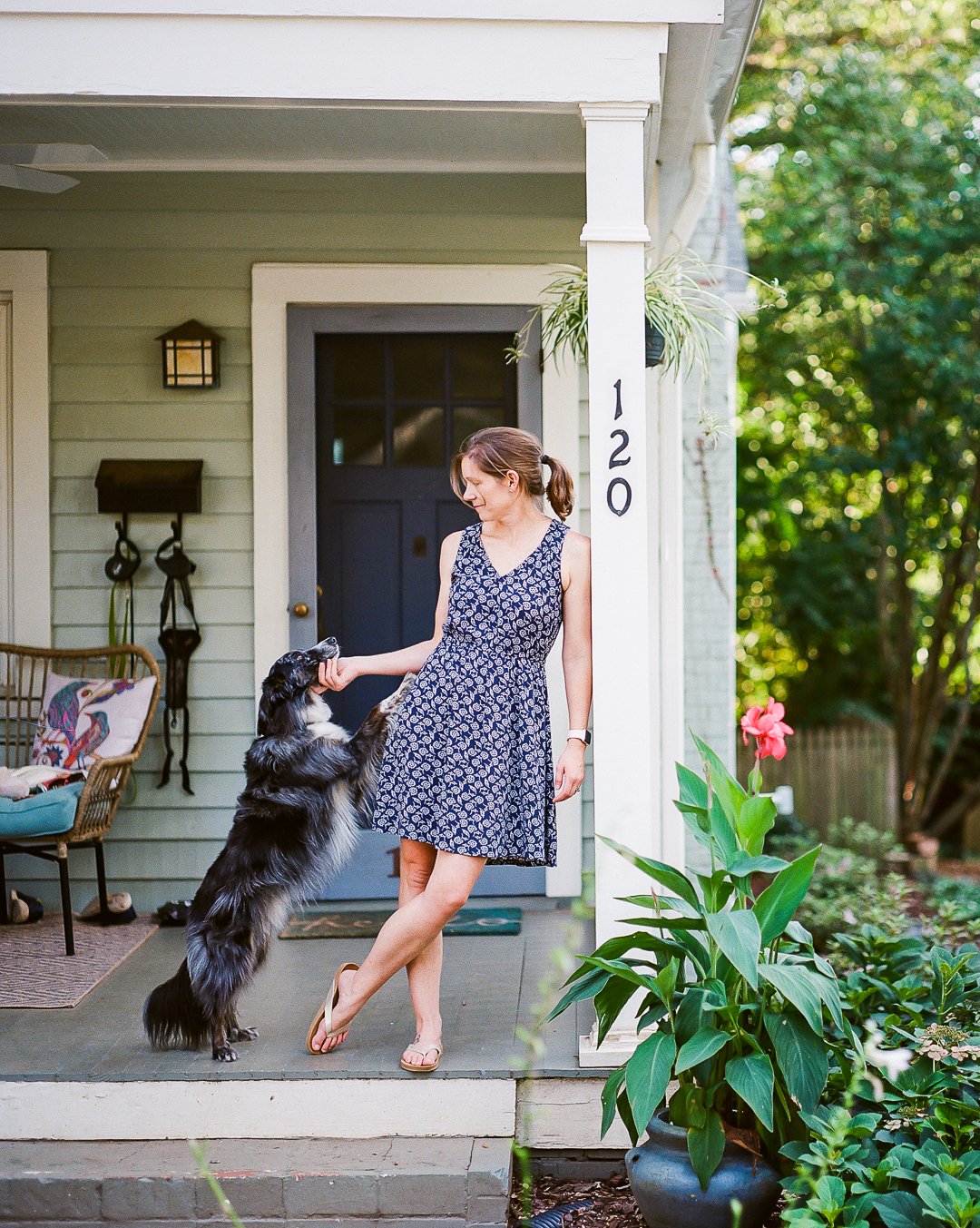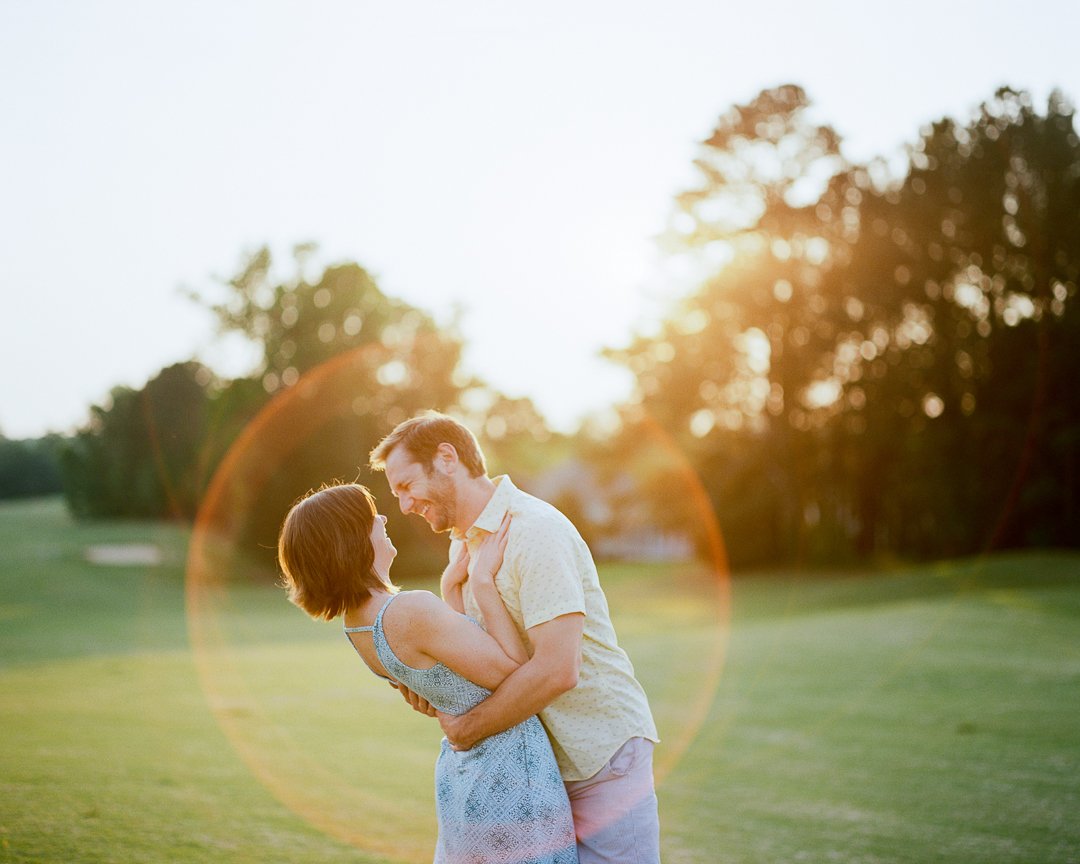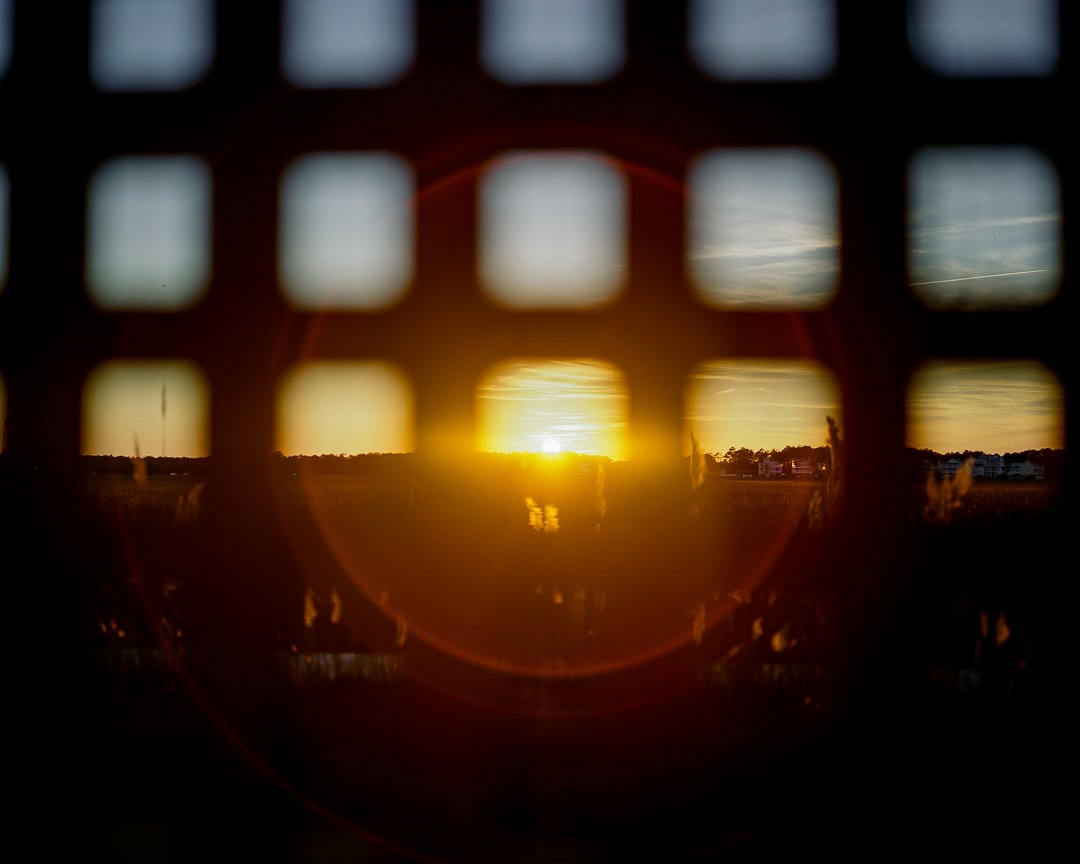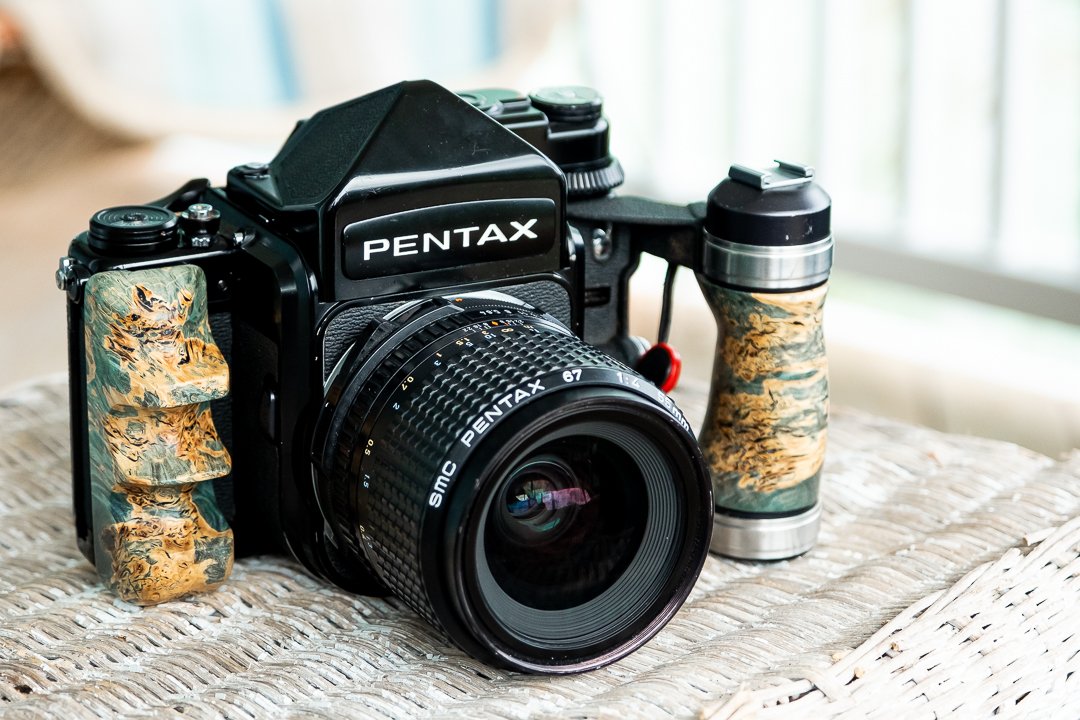Pentax 67 Review - Lenses, grips, and functionality
Pentax 67 Review
An SLR on Steroids
Pentax 67 Review
The Pentax 67 needs no introduction. You’re not here because you’ve never heard of this camera - you’re here because you want to know if it’s best for you. As prices for old film cameras continue to climb, the Pentax 67 seems to be lagging a bit behind the majority of medium format systems. An older Pentax 6x7 can still be had for under $500, and many of the lenses for around $300 (even one of the sharpest lenses in the catalog - the 75mm f/4.5 - can be had for $100-200). So do you get in now before they climb even higher? Let’s review this beast and find out if it’s the workhorse you’re missing.
A bit about my history with this system: I own three Pentax 67 models (two 6x7 and one 67) which I’ve put over 1000 rolls through them over the past 6+ years. I’ve shot weddings with two Pentax 67s dangling from a Holdfast Moneymaker, I’ve traveled extensively with this beast across the Americas, and combed hundreds of miles of beaches in hot, humid and hurricane-like conditions. I’ve also shot my daughter’s birth, family picnics and lazy Saturday afternoons around our backyard firepit. All three bodies have been off for repairs and CLAs and will no doubt have to again. They are, after all, 30-50 year old cameras.
Overall
Before I delve into the different models, lenses and features of the camera, I want to start with my overall thoughts of the Pentax 67 system and address the, ahem, elephant in the room: this thing is heavy. My kit with the wooden handles, TTL metering prism and the 105mm lens can add up to over five pounds. When considering this camera, this point shouldn’t be taken… lightly. On a strap, this thing is going to wear out your neck and put a bruise someplace on your body, wherever it’s knocking against.
If you can get past the size and weight as a limitation, then this kit gets very exciting. As a giant SLR on steroids, shooting is very straight forward as any other 35mm SLR. The lens lineup rivals many 35mm system and is second to none in the medium format sphere. Until I touched the Mamiya 6, the sharpness and contrast were more than enough for me to be completely satisfied.
Overall, the Pentax 67 remains one of my favorite cameras ever used. The 105mm makes this system irreplaceable, and the rest of the lens line up gives me plenty of options. If you’re on the fence, know that there is a lens for you in this system, and it doesn’t get much better than that perfect 6x7 format.
Pentax 67 Models
There were essentially four iterations of the Pentax 67:
The original Pentax 6x7, which came out in 1969.
The improved Pentax 6x7 with mirror lock up (MLU, get to that in a minute) in 1976.
The Pentax 67 in 1989, which for the most part were minor changes physically, with some internal electronic changes.
The final Pentax 67ii, which had many upgrades to features and ergonomics.
The best bang for the buck still remains the two middle models (Pentax 6x7 with MLU and the Pentax 67) as they are functionally the same but still can be had for well under $1000. But, always check those completed listings on eBay for the latest and greatest selling prices. The original model can be harder/costlier to repair, does not feature MLU, and is as old as it gets. If the model you’re looking at doesn’t have the MLU, just steer clear.
Pentax 67 Lenses
The most impressive medium format lens line up
The Pentax 67 lens line up is the largest of any medium format system, sporting a total of 20 different focal lengths, with many of those lenses going through multiple iterations. Ranging from a 35mm fisheye to a 1000mm reflex lens, there is a focal length for every style of photographer in this system. There are even two medium format zoom lenses, as well as leaf shutter lenses for the flash shooters. In short, this was a system built for all professional photographers. For a full list of Pentax 67 lenses, Antique Cameras has an exhaustive list with grading of each lens and their multiple versions. I will touch on the four that I currently own, starting with my favorite:
Pentax 67 105mm f/2.4
For most photographers interested in this system, there is one lens that is the main attraction: The Pentax 67 SMC 105mm f/2.4. There are three versions of this lens, with the two oldest versions (they will say “Takumar” on the front ring) sporting a radioactive thorium glass that is prone to yellowing. So the latest version tends to be at least 2-3 times as expensive as the older models. All three versions sport the same optical formula though with 6 elements in 5 groups. Coatings will differ through the versions, with the latest version known to provide the best contrast. For a great breakdown of the three versions, including how to tell them apart, check out my friend Jeff Armstrong’s write up on this lens: HOW CAN I TELL THE DIFFERENCES BETWEEN THE PENTAX 105MM F/2.4 LENS VERSIONS
This 105mm f/2.4 coupled with a 6x7 negative can give you that mind-blowing large format look when shot wide open - that pop that makes it feel three-dimensional. It is this lens that will have to be pried from my cold, dead hands for me to ever give it up. If this is why you are here - to find out if the hype is real - then buy it. Be aware, the price for this lens has skyrocketed over the past couple of years because people love that very shallow depth of field.
Snowday. Kodak Portra 160 shot with the Pentax 67 and 105mm f/2.4.
Halloween. Kodak Portra 400 shot with the Pentax 67 and 105mm f/2.4.
Pentax 67 105mm Lens Flare
Another item to note about the Pentax 67 105mm f/2.4 lens is its very unique lens flare. When shot wide open, The lens flare shows as an orange orb that can be fun to compose with. The orb can be seen in the view finder so you can adjust your position to wrap it around your subject. Be patient - it will take a bit of practice. A couple of tips:
Shoot directly into the sun (duh). Backlit is fully required here.
I use an external light meter to get my settings and meter the shadow created by my subjects. Then, I add another two stops.
When you get your orb in your viewfinder, try to compose it in the shadows. You’ll notice in the shots below the orb doesn’t live in the highlights - it’s completely blown out.
A strong runner up to the 105mm, and certainly more affordable, is the 90mm f/2.8. In fact, there are many portrait photographers that prefer this lens for couple reasons: 1) The 90mm offers a significantly closer focusing distance (25 inches) than the 105mm (39 inches), and 2) This lens has a variation with a leaf shutter that allows flash synch up to 1/500 second. Both versions of this lens can be had for roughly $400 these days.
Pentax 67 55mm f/4 Review
The battle of the wide angle lens of choice for the Pentax 67 comes down to the 45mm f/4 and 55mm f/4. Looking for that wider field of view equivalent to a 24mm lens? Go with the Pentax 67 45mm. I prefer the 55mm field of view, which is equivalent to a 28mm lens on 35mm format, but both are known to be extremely sharp. If you do go with the 55mm lens, the latest and greatest SMC f/4 version is the way to go. The older f/3.5 version is massive and sports a 100mm thread vs. the 77mm thread used on the newest version. Be warned though, the 55mm f/4 is still a huge lens.
Pentax 67 165mm f/2.8 Review
When it comes to portrait lenses, the 165m f/2.8 is the go-to lens for the Pentax 67 system. Sporting the same field of view as an 85mm lens on a 35mm system, it offers that compression that most portrait photographers crave from telephoto focal lengths. For the focal length and very wide aperture (for medium format lenses!), it’s surprisingly compact coming in at 835 grams and fits comfortably in the palm of my hand. Both versions of this lens sport the same optics, and both come with a built-in lens hood that retracts into the body. This lens is shockingly cheap and can be had for around $250. That is a steal for a killer portrait lens, and makes this a must-have in my book. For those that are looking to use flash in their work, the 165mm f/4 leaf shutter lens will let you use shutter speeds up to 1/500 sec.!
Pentax 67 55-100mm f/4.5 Review
From very early in my photography career, I’ve been a prime guy. And with film, primes really are the name of the game, especially in medium format ( I really don’t know of another medium format system that has zooms). And here’s why: they are freaking massive. As a landscape photographer, the freedom of a zoom to tweak that composition with the rotation of a ring is very liberating. What isn’t liberating is the sheer weight of this lens - this thing checks in at 1210 grams, that is over 2.5 pounds! With this locked onto you’re Pentax 67, you’re walking around with just under seven (7!!!) pounds of gear. I’ll cruise over 3 miles of sand dunes in the mornings, and that amount of weight can wear me out. To replace it though, I have to have my 55mm on the camera and 105mm in a bag, and then I still don’t have the freedom in between those focal lengths, so there are certainly trade-offs to consider.
But, the quality is superb. Wide open, at 55 or 100 or anywhere in between, this lens is extremely sharp. If I’m going to a defined location where I won’t be moving much and could use the flexibility of focal lengths, there’s no question that I’m grabbing this lens. If you’re a filter guy, note that this sports a ridiculous 95mm(!!!) filter ring. If you’re shooting filters, you better be into a filter system like Lee kit.
Pentax 67 Functions and Key Features
Mirror Lock Up
As a landscape photographer, the mirror lock up button is critical for me to help eliminate camera shake from the movement of this massive mirror flapping up. The oldest version of the Pentax 6x7 does not have a mirror lock up button, so this is a quick way to identify how old the model may be (if it hasn’t been modified). In my opinion, this button is really only critical at moderately-slow shutter speeds. If I’m shooting slower than 1/30 of a second, I slide this button up before my exposure to lift the mirror. HEADS UP - once it’s up, it won’t go down until you take your exposure. So make sure you’ve composed your shot and focused before activating mirror lock up. The mirror reset button WILL NOT lower the mirror if you used the MLU button to raise it. So even if you accidentally bump this switch, your best bet is to set the lens to infinity, guess your composition and fire the frame.
Aftermarket Grips
Matching left-hand and right-hand grips available
While the Pentax 67 came with the optional left-hand grip, only strap anchors were provided on the right-hand side. With the weight of this beast, it can be a bit awkward to grip when shooting. Many constantly ask if the left-hand grip is worth it, as they have become increasingly expensive ($250+). With the size and weight of this beast, I think it makes the perfect handle to carry this camera around. No strap needed, it will become a simple extension of your arm.
But the large flat face on the right-hand side is not conducive for gripping. Thankfully, some genius Pentax 67 enthusiasts have developed right-hand grips, and these are an absolute must-have. Even if you balk at the left-hand grip, the right is a must just for ergonomics.
The initial trail blazer was @Snapu who developed the wooden right hand grip in many different wood types and stains, and they are absolutely beautiful. @Pimp_my_pentax has improved upon that design, offering a matching left-hand grip, and has created absolutely stunning pieces out of stabilized wood. I’m a huge fan of colorful designs offered by @pimp_my_pentax, and his improvements have created a more robust grip that doesn’t chip or break as easily, and the grip frame is black to match the body of the Pentax 67. @snapu’s right hand grips have a silver frame which is a bit less aesthetic.
Loading Film into a Pentax 67
Hint: it’s not easy
Loading film into a Pentax 67 can be very frustrating. Angling in that roll just right so that it fits onto the spool holders can be maddening, especially if you’re in a hurry trying to capture a moment or some short-lived light. I have a few tips, but I think the best way to show you is a short video, which we’ll get to in a second.
TIP #1: When loading the film, DO NOT remove the paper strip holding the roll together until it is in the camera. I think the struggle many people run into is that they are trying to both hold the roll together and put it in the camera with the same hand. So leave it on.
TIP #2: Use your left hand to “pinch” the top of the spool when removing empty spools. Do this before releasing the spool retainer knobs (this is what the manual calls the silver clips on the bottom, I think I called them lugs in the video, which really makes no sense).
TIP #3: Match the angle of spool with the spool retainer.
Double Exposure Switch
If double exposures are key to your creativity, your options within a Pentax 67 become very limited. The obvious and easy choice is to drop the big coin on the Pentax 67ii, which features a lever to perform multiple exposures. But if you’re shopping for the Pentax 67 you’ll quickly find that the Pentax 67 did not come from the factory with a double exposure switch. What Pentax did offer was a factory modification to add a multiple exposure switch. This switch is found next to the 120/220 format selector. As in the picture above, if the “M” is visible, then multiple exposures can be performed. After firing your shot and before advancing the film, slide the metal lever to expose the “M”. When you “advance” only the shutter will advance, but the roll does not.
So is the Pentax 67 for you? Is the flexibility and quality of this lens line up on a 6x7 system what you crave? Or do you have your eyes set on that iconic 105mm f/2.4 lens that will produce amazingly shallow depth of field shots? And the biggest question of all: are you up to carrying this beast around and disturbing the peace with the slap of the loudest shutter known in the photography world? I hope I’ve helped answer some of these questions, and if not leave me a comment below!
As usual, you can find me on instagram: @peter_jeffrey_

